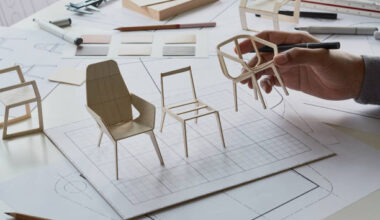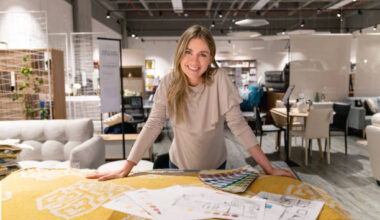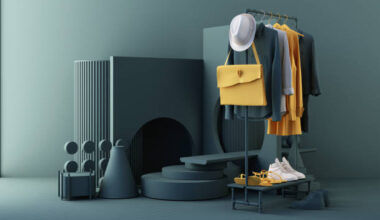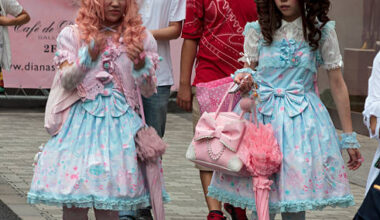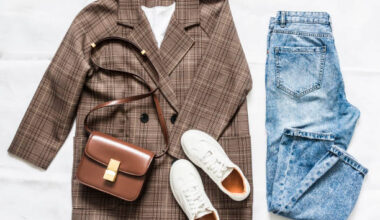During the tumultuous 1940s fashion art brought on by World War II, fashion became a symbol of escape as well as a testament to resiliency. The era’s spirit of creativity and adaptation was reflected in the thriving fashion industry, which thrived in spite of rationing, restrictions, and economic problems. A tribute to the continuing force of style in the face of adversity, 1940s fashion art was created through a mix of creativity, necessity, and cultural influences.
The Influence of War on Fashion
The Second World War had a significant influence on fashion, influencing not just the clothes themselves but also the attitudes and ideals they stood for. Designers faced the difficulty of creating within the limitations of rationing and utility while resources were limited and industry was concentrated on the war effort. As a result, there was a change toward pragmatism and simplicity with a focus on robustness and adaptability.
Utility and Functionality
Due to the necessity for garments to have various uses during the austere period, 1940s fashion became known for its utility. With its streamlined style and practical design, the utility dress became increasingly popular, especially in women’s fashion. These dresses, which reflected the necessity for practicality in daily life, frequently had pockets, adjustable fastenings, and detachable collars.
Glamour in Adversity
Despite the difficulties caused by the war, glamour remained a crucial component of 1940s fashion design. With movie actors acting as style symbols for viewers worldwide, Hollywood had a big influence on popular trends. The glamour of Hollywood offered a pleasant diversion from the harsh reality of war, encouraging women to embrace grace and refinement in their wardrobe choices.
The Influence of Cultural Shifts
Significant cultural changes, such as adjustments to gender roles and social conventions, also occurred throughout the 1940s. Women adopted fashions that were practical and empowering, reflecting these changes in the fashion world. During this period, the “working woman” emerged, opening the door for innovations like the tailored suit, which came to represent the professionalism and independence of women.
Artistic Expression
1940s fashion was not only functional and culturally significant, but it was also a means of artistic expression. Designers pushed the limits of conventional fashion conventions by experimenting with novel materials, shapes, and decorations. Vibrant designs, dexterous stitching, and dramatic draping techniques gave clothes dimension and texture, turning them into wearable artwork.
Legacy and Influence
The fashion industry is still influenced by the fashion art of the 1940s. Its emphasis on glitz, practicality, and creative expression has profoundly influenced designers and stylists of later generations. A timeless reminder of the ability of style to inspire, uplift, and endure is provided by the fashion industry’s tenacity and inventiveness during this turbulent time.
How to create a 1940s look?
The 1940s’ distinctive charm lies in the way they combined elegance and pragmatism, captivating audiences even now. Whether you want to channel the timeless glamor of this bygone period or are getting ready for a themed occasion, creating a 1940s look is an opportunity to embrace sophistication and flair. Here’s a how-to manual to help you pull off that recognizable retro look:
Start with the Silhouette
The 1940s fashion silhouette is defined by a feminine yet fitted shape. This typically translates to women having sculpted shoulders and a fitting waist. To truly recreate the spirit of the time, look for items like high-waisted pants, pencil skirts, and A-line dresses. For a traditional 1940s silhouette, men can choose high-waisted pants and fitted suits with wide lapels.
Embrace Vintage Fabrics and Patterns
When dressing in 1940s fashion, take into account the popular patterns and fabrics of the time. Wool, rayon, and silk were popular materials for women’s clothing, while tweed or pinstripes were frequently seen in men’s outfits. For a hint of realism, go for geometric patterns, polka dots, and floral motifs.
Pay Attention to Details
The little things are what really make a 1940s style come to life. For ladies, pearl jewelry, caps, and gloves were necessary finishing touches for any ensemble. To round off your look, think about including a wide-brimmed hat or a pair of cat-eye sunglasses. For extra flair, men can access with a pocket square, fedora hat, and watch with a retro vibe.
Focus on Hair and Makeup
The right hair and cosmetics are essential to pulling off a genuine 1940s aesthetic. Popular hairstyles of the time for women were traditional updos, pin curls, and victory rolls. To add even more glitz, try out hair scarves or ornate hair combs that are inspired by vintage hair accessories. To replicate the essence of 1940s beauty, go for a soft, natural makeup look with defined eyebrows, red lipstick, and winged eyeliner.
Don’t Forget the Footwear
Choose the appropriate shoes to round off your 1940s style. In 1940s fashion, males typically wore loafers or oxford shoes with their suits, while ladies wore pumps with a moderate heel. To go with your retro wardrobe, go for classic, simple styles.
What is 1940s design called?
A crucial period in the history of design occurred in the 1940s, which were distinguished by a special fusion of creativity, tenacity, and cultural influence. Design changed as the world struggled with the effects of World War II, taking into account the necessity for efficiency and practicality as well as the dynamics of a changing society. The 1940s style is still a living tribute to the inventiveness and inventiveness of the time, evident in everything from furniture to fashion to graphic design and architecture.
The Essence of 1940s Design
A common description of 1940s design is a blend of modernity and traditionalism, with streamlined, elegant forms mixed with nostalgic and handcrafted details. Designers were tasked with producing useful, functional items that satisfied daily necessities and offered a sense of security and familiarity in these uncertain times as the war raged.
Streamlined Simplicity
The emphasis on efficiency and simplicity in 1940s design is one of its distinguishing features. The era’s characteristics were geometric designs, clean lines, and sparse decoration, which expressed a desire for functionality and pragmatism. Modernist ideals were adopted by architects, and the result was a landscape characterized by large windows, open floor layouts, and flat roofs.
Nostalgia and Optimism
In spite of the horrors of war, 1940s design also radiated hope and nostalgia, taking cues from the past but also looking to the future. This can be seen most clearly in the fields of fashion and home design, where retro styling and vintage motifs have become fashionable trends. Pastel colors, floral patterns, and fanciful accessories gave the house a charming and whimsical feel while also offering a sense of escape from the harsh reality of wartime living.
Industrial Influence
1940s industrialization had a significant effect on design, affecting everything from production methods to aesthetic preferences. Design became more accessible to the general public and more economical because to the development of mass production techniques, which also helped democratize design. Materials like plastic, steel, and aluminum came to be associated with the time period, giving many designs and goods a sleek, futuristic appearance.
Legacy and Influence
The 1940s design movement is still felt today in the design industry, impacting everything from fashion to graphic design to architecture. Its focus on practicality, simplicity, and optimism is still relevant in a world that is changing and evolving all the time. Designers and consumers alike may tap into a rich legacy of creativity and ingenuity by adopting the design ideas of the 1940s, honoring the timeless appeal of a bygone era.
How to dress like a 1940s girl?
The fashion of the 1940s was defined by a fusion of sophistication, practicality, and feminine charm, giving off an air of ageless elegance. You may capture the essence of a bygone period by looking like a 1940s girl, regardless of whether you’re inspired by the glitz of Hollywood stars or the tenacity of women at home. Here is a thorough how-how to help you pull off that timeless vintage look:
Embrace the Silhouette
The feminine yet fitted shape of 1940s fashion defines its silhouette. Seek for dresses and skirts with structured shoulders, pencil or A-line skirts, and waists that are nipped in. During this time, dresses with modest hemlines and sleeves were popular, evoking the period’s tasteful yet conservative fashion.
Choose Vintage-Inspired Fabrics and Patterns
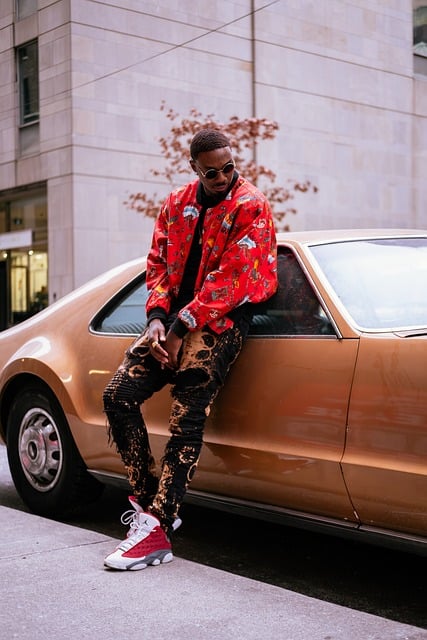
Choose 1940s-style materials and designs for your clothing selections to create a wardrobe that pays homage to the decade. Fabrics including rayon, wool, and cotton were frequently utilized, and many clothes were decorated with geometric designs, polka dots, and floral motifs. To encapsulate 1940s style, look for vintage-inspired shirts, skirts, and dresses in these patterns and fabrics.
Pay Attention to Details
The little things are what really make an outfit with a 1940s vibe stand out. During this time, accessories were crucial in finishing off a woman’s appearance. For a genuine touch, include gloves, a hat with a wide brim, or a handbag with a vintage vibe in your ensemble. Remember to accent your ensemble to add glitz and sophistication with pearl jewelry, brooches, and hair accessories.
Master Vintage Hairstyles and Makeup
The right hair and cosmetics can make you look like a real 1940s movie star. Try out some retro-inspired hairstyles to go with your ensemble, such pin curls, victory rolls, or traditional updos. To recreate the classic beauty of the 1940s, go for a delicate, natural makeup look with defined eyebrows, red lipstick, and winged eyeliner.
Choose Classic Footwear
The appropriate shoes will complete your 1940s-inspired look. For a true retro look, search for shoes with modest heels and timeless styles like pumps, T-strap heels, or Mary Janes. Select looks that will let you walk out with elegance and confidence by being both comfortable and stylish.
What was about 1940 fashion?
Throughout the 1940s, World War II and the accompanying socioeconomic shifts had a significant impact on fashion. The decade is marked by a fusion of beauty, patriotism, and pragmatism, as well as inventions that arose out of necessity as a result of wartime limitations and rationing. Here are a few essential elements of 1940s style:
Utility Clothing
The advent of utility clothing was one of World War II’s most notable effects on fashion. Cloth and material rationing resulted in the production of affordable, long-lasting, and useful clothing. Utility suits and dresses for women gained popularity because of its useful aspects like detachable collars and pockets, as well as their simpler silhouettes and sparser decorations.
Make Do and Mend
People were urged to “make do and mend,” which involved fixing and reusing clothing rather than purchasing new, because resources were scarce. People began to emphasize inventiveness and thriftiness as a result of finding creative ways to alter and mend their clothing to make it last longer.
Glamour and Escapism
Despite the difficulties of war, glitz continued to be a significant component of fashion, offering a means of escape and inspiration to raise spirits. Style was still influenced by Hollywood films and stars; glitzy actresses like Katharine Hepburn and Joan Crawford created trends with their refined and classy appearances.
Military Influence
In the 1940s, the military had a big influence on fashion. Men’s and women’s military-inspired attire, like bomber jackets, khaki pants, and trench coats, emerged in style. Functional elements like brass buttons, fitted shapes, and epaulets defined the military aesthetic.
Feminine Silhouettes
Despite the emphasis on utility, feminine forms were nevertheless welcomed in 1940s design. Women’s clothing emphasized padded shoulders, long skirts, and tight waists to create an hourglass form that was stylish and attractive. Men’s tailored suits with tapered waists and broad shoulders were fashionable because they emphasized a powerful, manly figure.
Stockings and Suits
Since nylon and silk were only allowed for military usage, ladies frequently turned to makeup to give the appearance of stockings by creating a seam down the back of their legs. Men’s fashion also changed, moving away from the conventional suit and toward more casual wear as workwear and leisurewear changed to meet the demands of a changing wartime environment.
Influence of Parisian Couture
In spite of the wartime interruption, Parisian fashion remained influential in the 1940s. Designers such as Christian Dior and Coco Chanel made attractive yet functional designs in response to the limitations of the war, setting the stage for the post-war fashion revolution of the 1950s.
What inspired 1940s fashion?
A number of things, such as the outcomes of World War II, changes in culture, technological advances, and cultural influences, all had an impact on 1940s fashion. The following major figures influenced fashion in this era:
World War II
It is impossible to exaggerate how much the World War II affected fashion. Utility clothing was developed as a result of wartime rations and constraints, emphasizing durability and practicality over frivolity. Lack of access to materials like silk and nylon resulted in innovations such as cosmetics that gave the appearance of stockings, while civilian clothes design incorporated military uniform elements like brass buttons and epaulets.
Nationalism and Patriotism
During the war years, nationalism and patriotism were widespread, and wearing certain clothes became a way to show one’s support for one’s homeland. Women started dressing in red, white, and blue, the colors of patriotism, and both sexes started to wear clothes with military themes. As a show of support, national identification symbols like the American flag motif or military insignia were incorporated into apparel and accessories.
Hollywood Glamour

Hollywood’s glitzy film stars and lavish productions managed to enthrall spectators even in the midst of the war. The refined and exquisite styles of actresses like Rita Hayworth, Katharine Hepburn, and Joan Crawford set trends and encouraged women to aspire to similar beautiful appearances. Hollywood continued to have a significant impact on fashion, offering a dream and sense of escape during hard times.
Cultural Shifts
Considerable cultural change, including adjustments to gender roles and social standards, occurred throughout the 1940s. Large numbers of women joined the labor to aid in the war effort, which created a need for clothes that was both utilitarian and practical enough to fit their new positions. The rise of the “working woman” opened the door for fashion advances like separates and tailored suits that celebrated the independence and empowerment of women.
Technological Advancements
In the 1940s, technological developments had an impact on fashion as well, especially in the areas of manufacturing and textiles. Natural fibers like silk and wool were scarce during the war, therefore synthetic textiles like rayon and nylon became more and more popular as substitutes. The streamlined aesthetic of the day was reflected in the reasonably priced, easily accessible apparel that was made possible by mass production techniques.
Parisian Couture
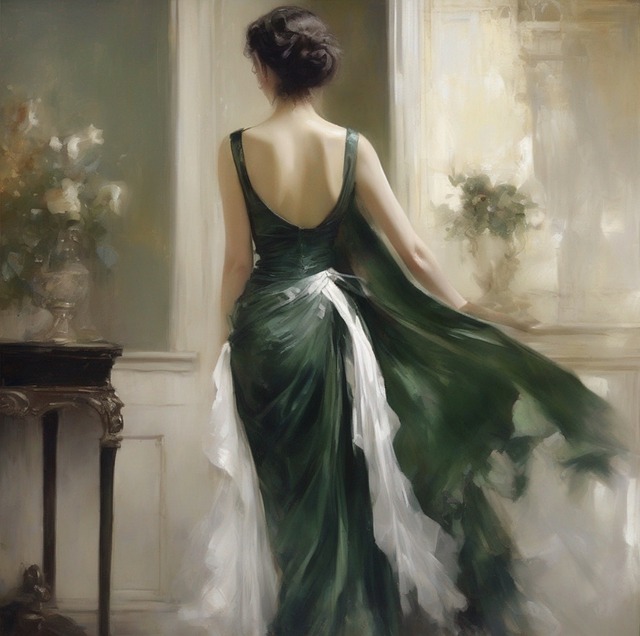
The 1940s saw Parisian couture maintain its influence on fashion in spite of the war’s disruptions. Designers such as Christian Dior and Coco Chanel made attractive yet functional designs in response to the limitations of the war, setting the stage for the post-war fashion revolution of the 1950s. Paris continued to be a hub for innovation and creativity, inspiring both customers and designers with its classic sense of style.
In summary, fashion design from the 1940s fashion art captures a unique era marked by ingenuity, tenacity, and societal revolution. The glitter of Hollywood-inspired looks and the functionality of utility apparel are just two examples of how 1940s fashion captures the essence of the era and still inspires and shapes modern design.
